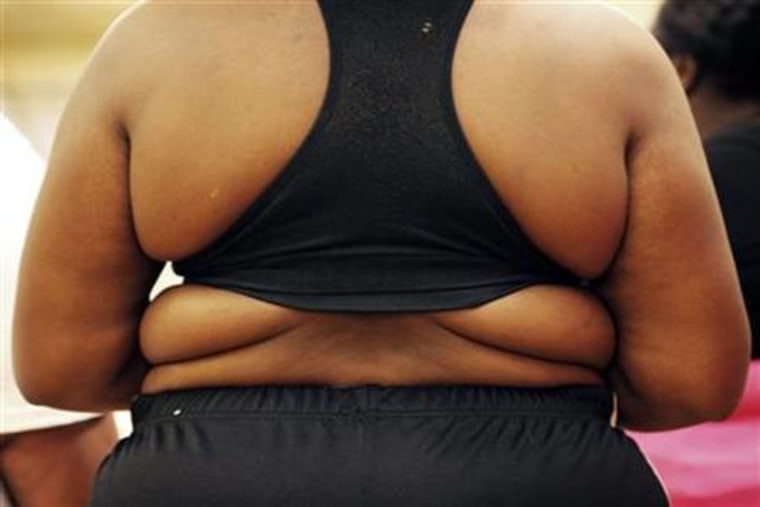In 1995, no state had an obesity rate above 20 percent. Now, all but one does.
An annual obesity report by two public health groups looked for the first time at state-by-state statistics over the last two decades. The number of obese U.S. adults rose in 16 states in the last year, helping to push obesity rates in a dozen states above 30 percent, according to a report released on Thursday.
Mississippi is the fattest state in the union with an adult obesity rate of 34.4 percent. Colorado is the least obese -- with a rate of 19.8 percent -- and the only state with an adult obesity rate below 20 percent, according to "F as in Fat," an annual report from the Trust for America's Health and the Robert Wood Johnson Foundation.
"When you look at it year by year, the changes are incremental," says Jeffrey Levi, executive director of the Trust for America's Health, which writes the annual report with the Robert Wood Johnson Foundation. "When you look at it by a generation you see how we got into this problem."
Obesity rates did not decline in any state and even Colorado does not win high marks -- its score means one in five state residents is at higher risk for conditions like heart disease and diabetes.
"Today, the state with the lowest adult obesity rate would have had the highest rate in 1995," said Levi.
Four years ago, only one U.S. state had an adult obesity rate above 30 percent, according to the report. Obesity is defined as a body mass index -- the weight-to-height ratio -- of 30 or more.
The study, based on 2010 data, says a dozen states top 30 percent obesity, most of them in the South. Mississippi topped the list for the seventh year in a row, with Alabama, West Virginia, Tennessee and Louisiana close behind. Just five years ago, in 2006, Mississippi was the only state above 30 percent.
There was a bit of good news in the report: Sixteen states reported increases in their obesity rates, down from 28 states that reported increases last year. Levi says those increases have been gradually slowing, most likely due to greater public awareness of health issues and government attempts to give schools and shoppers better access to healthier foods.
"We're leveling off to some degree at an unacceptably high level," Levi said.
First lady Michelle Obama has tackled the issue with her "Let's Move" campaign, pushing for healthier school lunches, more access to fruits and vegetables and more physical activity. Republicans in Congress have pushed back somewhat against some of those programs, however, saying a rewrite of school lunch rules is too costly and questioning an Obama administration effort to curb junk food marketing aimed at children.
As in previous years, the study showed that racial and ethnic minorities, along with those who have less education and make less money, have the highest obesity rates. Adult obesity rates for African-Americans topped 40 percent in 15 states, while whites topped 30 percent in only four states. About a third of adults who did not graduate from high school are obese; about a fifth of those who graduated from college are considered obese.
Some groups say such behavioral initiatives are not enough, arguing that food manufacturers and restaurant chains need limits on how they market to children.
The Center for Science in the Public Interest, a U.S. consumer group, last year sued McDonald's Corp to stop the world's largest hamburger chain from using Happy Meal toys to lure children into its restaurants. Last month, the American Academy of Pediatrics -- a group of U.S. pediatricians -- called for a ban on junk food ads aimed at children.
Industry is fighting such efforts.
The report released on Thursday showed that over the past 15 years, seven states have doubled their rate of obesity and 10 states have doubled their rate of diabetes.
Since 1995, obesity rates have risen fastest in Oklahoma, Alabama and Tennessee, while Colorado, Connecticut and Washington, D.C., had the slowest increases.
Dr. Mary Currier, Mississippi's state health officer, says her state has struggled to drop its No. 1 status and it has been challenging because much of the state is poor and rural.
"We live in an area of the country where eating is one of the things we do, and we eat a lot of fried foods," she said. "Trying to change that culture is pretty difficult."
She says the state has had some success by making school lunches healthier, taking high-calorie foods and drinks out of school vending machines and trying to find more low-cost exercise facilities for residents of rural areas.
"It is frustrating, but we've had some progress," Currier said. "We just have to continue to work at this. It's not something that's going to change overnight."
